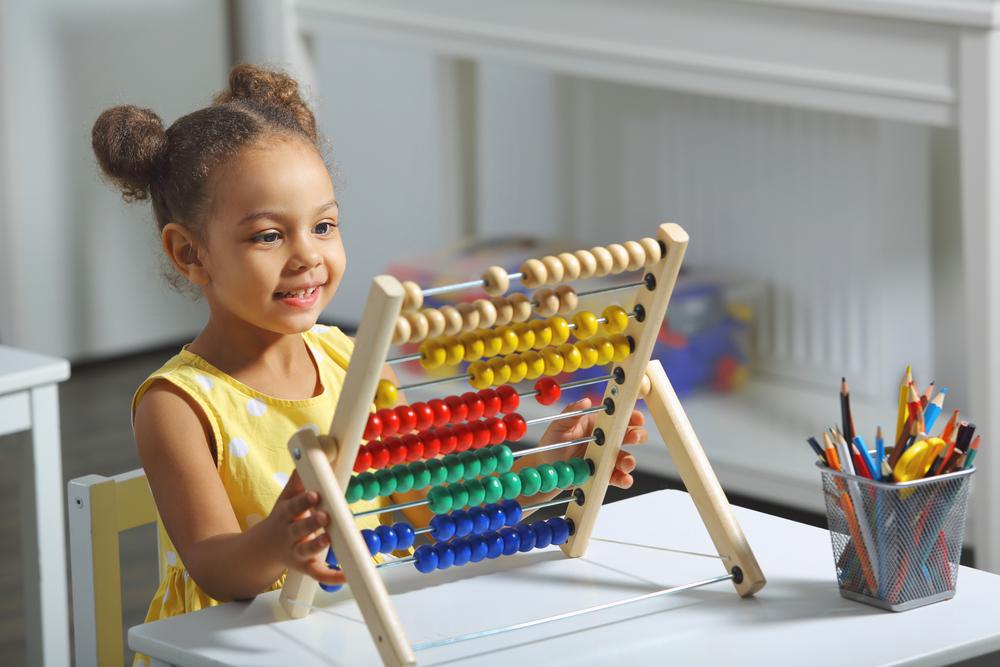Understanding currency Math Worksheets for Ages 5-9
4 filtered results
-
From - To
Are you looking to enhance your child's understanding of money? Our "Understanding Currency Math Worksheets" for ages 5-9 offer engaging and interactive exercises tailored to teach young learners about different denominations, recognizing coins and bills, and basic counting skills. These comprehensive worksheets feature visually appealing designs and fun activities that capture children's attention while making learning enjoyable. Ideal for homeschooling or supplementary practice, our materials will build your child’s confidence in handling money and reinforce essential math skills. Start your child's financial literacy journey today with our downloadable worksheets that make currency concepts easy and exciting!
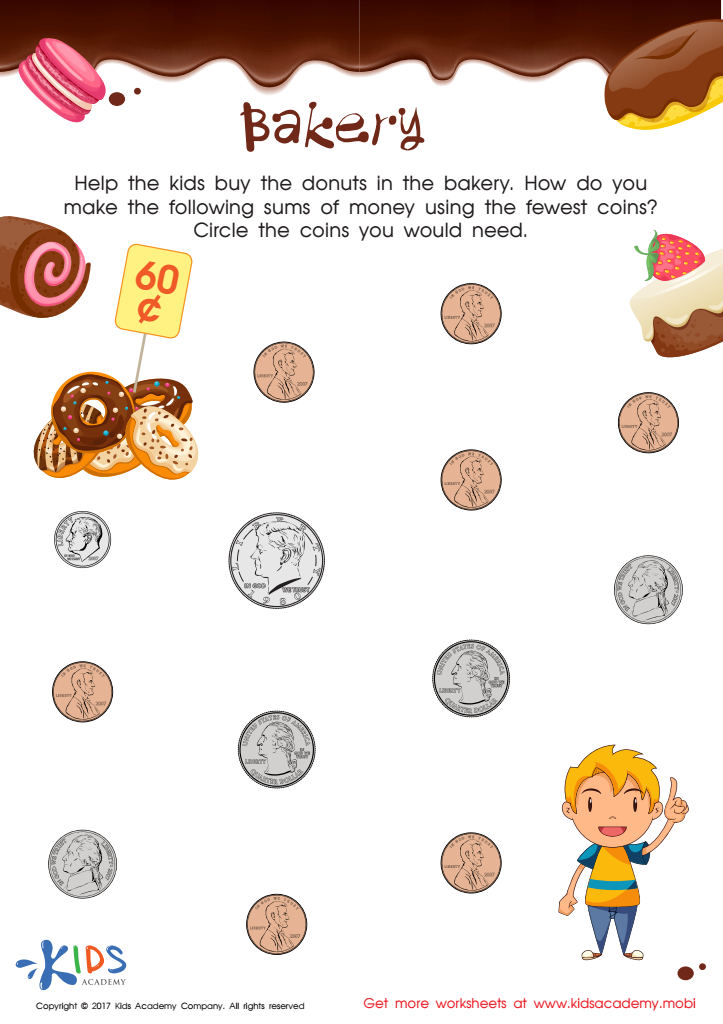

Counting Coins Worksheet
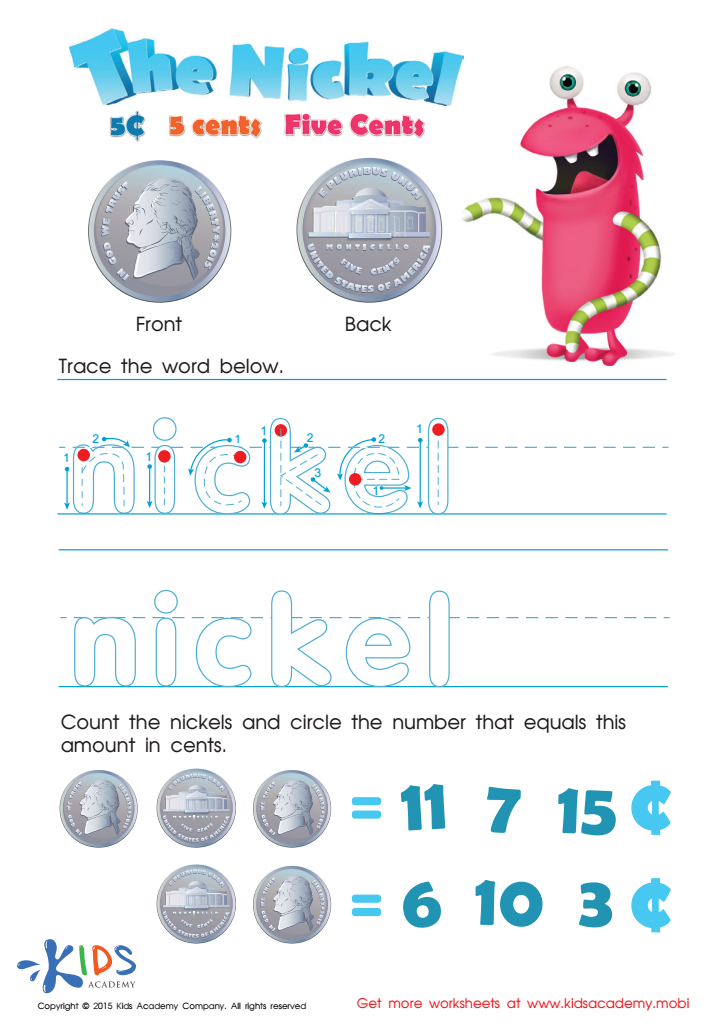

Five Cents or the Nickel Money Worksheet
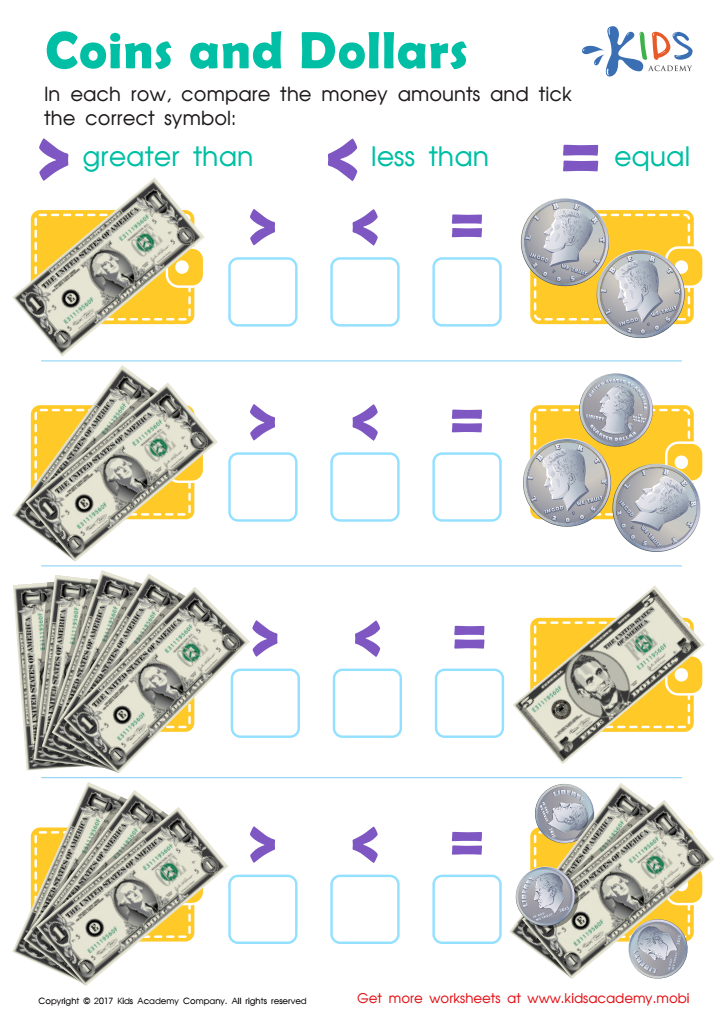

Money: Coins Dollars Printable
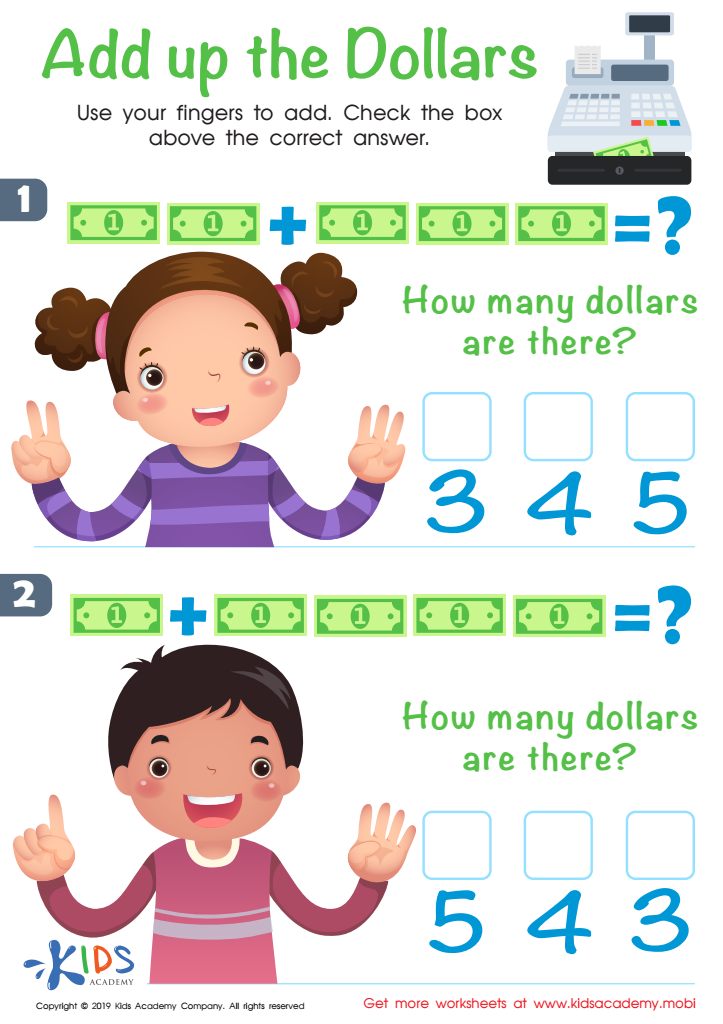

Add up the Dollars Worksheet
Understanding currency math is essential for children aged 5-9 because it equips them with lifelong financial literacy skills. At this age, children are naturally curious and eager to learn about the world around them, making it the perfect time to introduce basic concepts of money, such as counting coins, recognizing different denominations, and understanding value. This foundational knowledge not only enhances their mathematical skills but also fosters critical thinking as they make decisions about spending and saving.
Moreover, early exposure to currency math helps instill a sense of responsibility and independence in children. When they learn to manage small amounts of money, they develop budgeting skills that will benefit them throughout their lives. Parents and teachers can use everyday situations, like shopping, to reinforce these concepts, making learning more engaging and relevant.
Integrating currency math activities in early education also supports social skills, as children collaborate in group settings, practicing scenarios that mimic real-world financial interactions. Overall, fostering a strong understanding of currency math provides young learners with practical tools for managing their finances wisely and encourages a positive attitude towards math as a subject. Thus, parents and teachers should prioritize this essential aspect of early education.
 Assign to My Students
Assign to My Students






.jpg)

